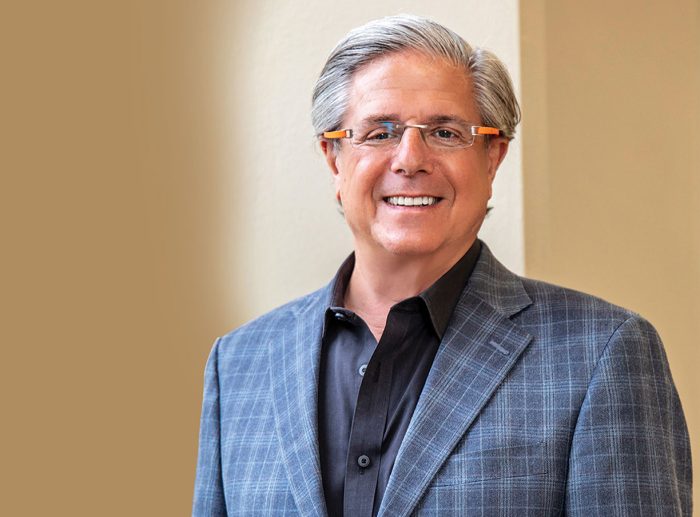Revolutionizing the future of education and work

Posted on November 21, 2023
Chief transformation and innovation officer helps expand access to emerging technology
Bob Schwartz has been working to build Mount Mary President Isabelle Cherney’s vision for student success in an evolving and uncertain landscape: to promote flexibility, encourage creative problem solving and embrace change.
This past July, the former dean of the School of Arts& Design and Business at Mount Mary University stepped into his new role as chief transformation and innovation officer. Schwartz, who previously served as vice president for global design & user experience at GE Healthcare, has been recognized for his professional contributions by the Design Management Institute and the Industrial Designers Society of America.
Making connections and building partnerships
In his new role, Schwartz will work with the recently launched Mount Mary University Institute for the Advancement of Women and Children. The institute supports leadership, health and wellness, human rights and access to technology via empowerment through education in science, technology, reflection, engineering, arts and math (STREAM). Schwartz serves as liaison between the University and external corporate and non-profit organizations, helping to nurture projects, sponsorships, partnerships, internships, scholarships and direct financial support. By forging connections to local and global corporations, non-governmental organizations and service providers, he is helping to open new opportunities for and access to practical, hands-on learning using emerging technologies such as artificial intelligence (AI), data analytics and cloud-based learning. This extends beyond technology to include resources that can help to support the goals of the institute and will benefit our entire community.
“We’re specifically looking to partner with companies who share our values,” he emphasizes. To Schwartz, this means organizations with a strong inclusive culture, and an interest in narrowing the disparity gaps in access to STREAM in education, healthcare and technology.
“Students at Mount Mary look at things through a lens of social justice. We’re searching for partners who share our goals of transforming the world.”
Bob Schwartz, chief transformation and innovation officer
Currently, the university is developing collaborations with a wide array of organizations where students gain real-world learning experiences, internships and jobs centered around improving the quality of life for others. One example is CVS Health, where students have access to well-paid internships that provide direct access to technology leaders for coaching and problem solving. Locally, Mount Mary is working with Penfield Children’s Center to create concepts for collaboration, internships, grants and more. In October, President Cherney led a delegation of administration, faculty and students to visit the Amazon Web Services Cloud Innovation Center, exploring how the university might best harness the company’s available resources.
Schwartz emphasizes that emerging technology connects with every major on campus and every field, not just science and engineering. He cites examples of interior designers using virtual reality to bring two-dimensional spaces to life, and humanities disciplines using rapidly emerging AI-driven search functions to access and summarize tens of thousands of research articles instantaneously.
“Whether it’s occupational therapy, dietetics, nursing, environmental design or any discipline, there are endless ways for students to benefit,” he says. “We’re seeing a vertical acceleration in advancement of technology. It’s not in the distant future – this is the world that students live in now and the tools they will use in practice during their professional lives.”
While the landscape of both education and work is rapidly changing, Schwartz sees creativity and the ability to adapt to emerging tools as the keys to long term career success. He states the importance of educating students to embrace curiosity and openness to lifelong learning, preparing them to excel in a world requiring flexibility and adaptation.
“We’re connecting our students with new visions, possibilities and realities for the future of work,” he says.



